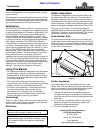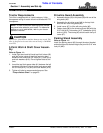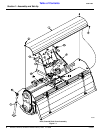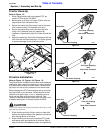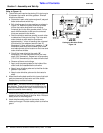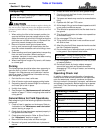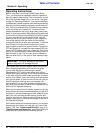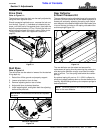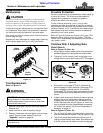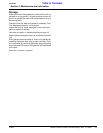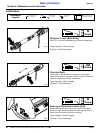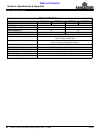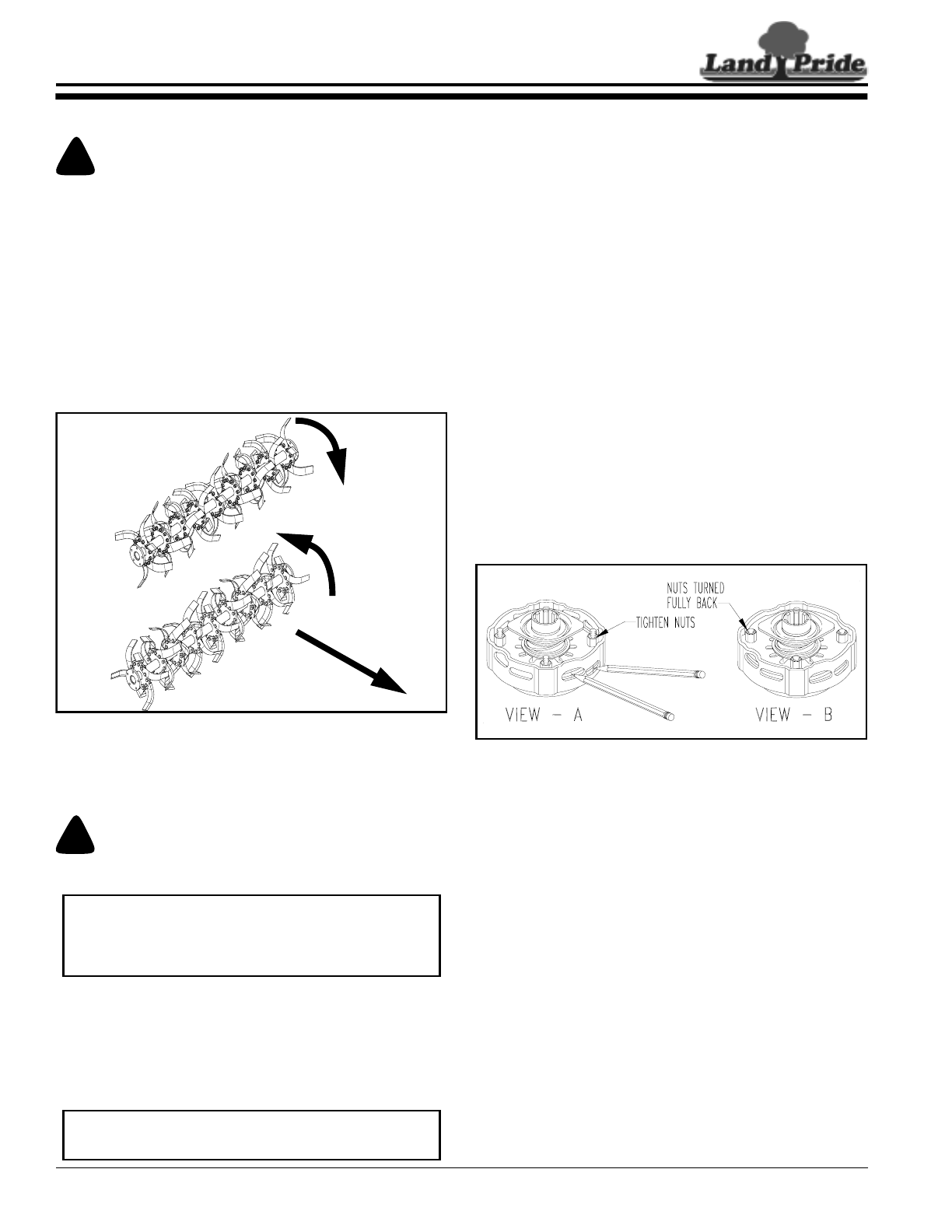
14
Section 4: Maintenance and Lubrication
RTA2064, RTA2072, RTR2064 & RTR2072 Rotary Tillers 311-328M
7/03/07
Land Pride
Table of Contents
Section 4: Maintenance and Lubrication
Maintenance
!
CAUTION
For safety reasons, each maintenance operation must be
performed with the tractor’s PTO disengaged, the Tiller
lowered completely to the ground or on safely supported
blocking, tractor engine shut off and ignition key removed.
Proper servicing and adjustment can increase the life of
any implement. With careful and systematic inspection,
you can avoid costly maintenance, time and repair.
After using your tiller for several hours, check all bolts to
be sure they are tight.
Replace any worn, damaged or illegible safety labels by
obtaining new labels form your Land Pride Dealer.
Tine Replacement
Figure 4-1
Tine Replacement
Refer to Figure 4-1:
!
WARNING
Worn tines may be very sharp!
1. Remove 2 bolts and nuts from tine to be replaced.
Remove tine.
2. Install new tine on side of attaching flange.
3. Replace 2 bolts and nuts and tighten nuts to proper
torque. See the Torque Values Chart in the
“Appendix” section on page 23.
20551
Direction of T
ra
vel
RTA20
Rotation
RTR20
Rotation
IMPORTANT: Always install tine with cutting edge
facing direction of rotor shaft rotation. When
ordering replacement tines, be sure to order both
right and left hand tines.
IMPORTANT: Replace tines with genuine Land
Pride tines only.
Driveline Protection
Driveline components are protected from shock loads by
a friction slip clutch. The clutch must be capable of
slippage during operation to protect the gearbox,
driveline and other drive train parts.
Friction clutches should be “run-in” prior to initial
operation and after long periods of inactivity to remove
any oxidation that may have accumulated on the friction
surfaces. Repeat “run-in” instructions at the beginning of
each season and when moisture and/or condensation
seizes the inner friction plates.
Refer to Figure 4-2 below and Figure 4-3 on page 16 to
determine which friction clutch your Rotary Tiller has.
Follow run-In, disassembly and assembly instructions for
your specific clutch.
Clutches With 4 Adjusting Nuts
Clutch Run-In
Refer to Figure 4-2 (View - A):
1. Using a pencil or other marker, scribe a line across the
exposed edges of the clutch plates and friction disks.
2. Tighten all 4 nuts uniformly until spring load is low
enough that the clutch slips freely with PTO engaged.
Clutches With 4 Adjusting Nuts
Figure 4-2
3. Start tractor and engage PTO for 2-3 seconds to
permit slippage of clutch surfaces. Disengage PTO,
then re-engage a second time for 2-3 seconds.
Disengage PTO,shut off tractor and remove key. Wait
for all components to stop before dismounting from
tractor.
4. Inspect clutch and ensure that the scribed markings
made on the clutch plates have changed position.
Slippage has not occurred if any two marks on the
friction disk and plate are still aligned. A clutch that
has not slipped must be disassembled to separate
the friction disk plates. See Clutch Disassembly &
Assembly on page 15.
Refer to Figure 4-2 (View - B):
5. Turn all 4 nuts fully back if no two marks on the friction
disk and plate are still aligned. Clutch is ready for use.
6. The clutch should be checked during first hour of
cutting and periodically each week. An additional set
of scribe marks can be added to check for slippage.
23696



